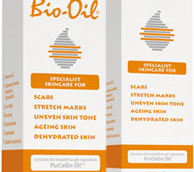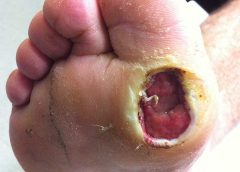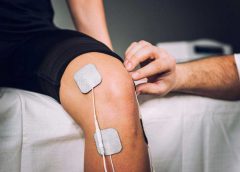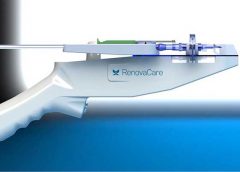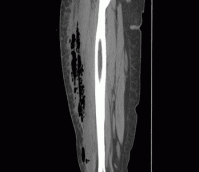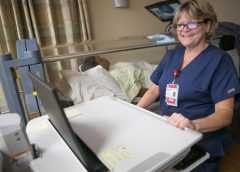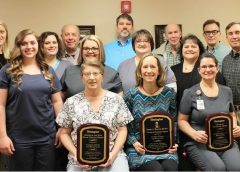Minimize scarring through new patient booklet.
A new patient resource has launched in the UK offering primary care healthcare professionals (HCPs) the opportunity to help patients self-care for their wounds and minimise scarring.
The new patient booklet resource, ‘Supporting you to care for wounds and to minimise scarring’, created with help from expert Dermatologist, Justine Hextall, and supported by Bio-Oil, has been developed following research demonstrating the the frequency that HCP’s are required to provide support to patients in primary care, with one in five (20%) being asked for advice on a weekly basis. (more…)
Read More
Carol Emanuele beat cancer. But for the last two years, the Philadelphia woman has been fighting her toughest battle yet. She has an open wound on the bottom of her foot that leaves her unable to walk and prone to deadly infection.
In an effort to treat her diabetic wound, doctors at a clinic in Northeast Philadelphia have prescribed a dizzying array of treatments. Freeze-dried placenta. Penis foreskin cells. High doses of pressurized oxygen. And those are just a few of the treatment options patients face.
“I do everything, but nothing seems to work,” said Emanuele, 59, who survived stage 4 melanoma in her 30s. “I beat cancer, but this is worse.” (more…)
Read More
One of the most amazing things about the human body is its ability to repair itself. Lacerations, punctures, abrasions all heal with little or no care. Chronic wounds, those that persist day after day, are a small subset of wounds but they compose a troublesome minority. They include, but are not limited to, diabetic foot ulcers (DFU), venous leg ulcers (VLU), and pressure ulcers (colloquially known as bedsores). These represent the body’s failure to fix itself. (more…)
Read More
A new study has identified a peptide, derived from the Komodo dragon, called VK25, which can be synthesized and used as an antimicrobial peptide to promote wound healing.
The new research has identified (see below) a peptide found from the Komodo dragon (Varanus komodoensis), called VK25, which appears to be useful as a cationic antimicrobial peptide (CAMP). There is currently considerable interest in antimicrobial peptides in a world where antibiotic effectiveness is in decline. These peptides are potent, broad spectrum antibiotics which demonstrate potential as novel therapeutic agents. (more…)
Read More
Pennsylvania state trooper Matt Uram was talking with his wife at a July Fourth party in 2009 when a misjudged spray of gasoline burst through a nearby bonfire and set him alight. Flames covered the entire right side of his body, and after he fell to the ground to smother them, his wife beat his head with her bare hands to put out his burning hair. It was only on the way to the ER, as the shock and adrenaline began to wear off, that the pain set in. “It was intense,” he says. “If you can imagine what pins and needles feel like, then replace those needles with matches.” (more…)
Read More
An innovative “Smart Scar-Care” pad which serves the dual functions of reinforcing pressure and occlusion has been designed by researchers to treat hypertrophic scars from burns, surgeries and trauma.
Compared with the traditional pressure pads and silicone gel sheets, “Smart Scar-Care” pad has the advantages of both.
It showed good performance in reducing pigmentation and vascularity, improving elasticity and preventing dehydration in a clinical trial. It is more durable and user-friendly compared with the traditional pad (polyethylene foam) as reported by the patients. This innovative design has won the Grand Award and Gold Medal with the Congratulations of Jury at the 45th International Exhibition of Inventions of Geneva, 2017. (more…)
Read More
A 39-year-old woman presents to the ED with leg pain and fever. She initially noted redness and pain above her knee 2 weeks ago and was evaluated at an outside hospital. She completed a 10-day course of oral antibiotics for cellulitis. Over the last two days, she has had progressive leg swelling of her entire right thigh. The pain is now so severe that she is having difficulty walking. Her past medical history is negative for diabetes mellitus, chronic liver disease, or alcohol and IV drug use.
On exam, she is febrile to 102.7 F, heart rate is 96 bpm, and blood pressure is 112/65. She has a 12 cm area of faint erythema on her right thigh and tenderness to palpation of her entire right leg with diffuse edema. There is no ecchymosis or bullae formation. (more…)
Read More
MicroRNAs are interesting target structures for new therapeutic agents. They can be blocked through synthetic antimiRs. However, to date it was not possible to use these only locally. Researchers at Goethe University Frankfurt have now successfully achieved this in the treatment of impaired wound healing with the help of light-inducible antimiRs.
MicroRNAs are small gene fragments which bond onto target structures in cells and in this way prevent certain proteins from forming. As they play a key role in the occurrence and manifestation of various diseases, researchers have developed what are known as antimiRs, which block microRNA function. The disadvantage of this approach is, however, that the blockade can lead to side effects throughout the entire body since microRNAs can perform different functions in various organs. Researchers at Goethe University Frankfurt have now solved this problem. (more…)
Read More
Share your wound care insights and knowledge through WoundCareAdvisor.com
Consider contributing pertinent, useful information that health care professionals can utilize in the wound care practices
Sometimes we all think “It would be great to share this information with my peers”. WoundCareAdvisor.com invites you to do just that. . .share best practices, interesting case studies, practice information such as assessment techniques or documentation tips and more through our popular website. (more…)
Read More
MIDDLETOWNThe Wound Care Center and Hyperbaric Services at Atrium Medical Center recently was recognized with a national award for clinical excellence.
The Center of Distinction Award was presented by Healogics, the nation’s leading and largest wound care management company. The center was also honored with the Healogics President’s Circle Award.
The awards recognize outstanding clinical outcomes for 12 consecutive months, including patient satisfaction higher than 92 percent, and a wound healing rate of at least 91 percent in less than 31 median days. (more…)
Read More

